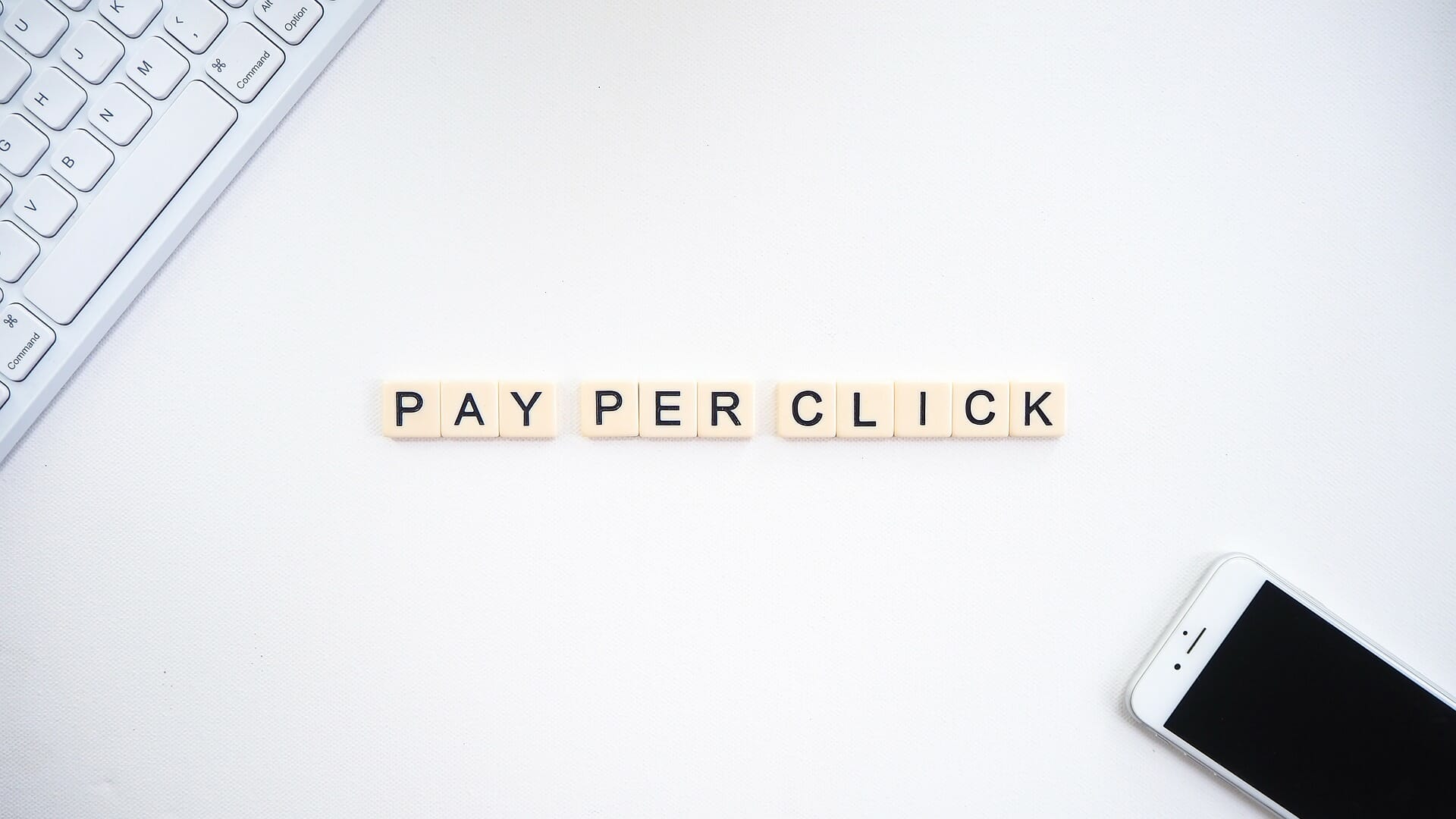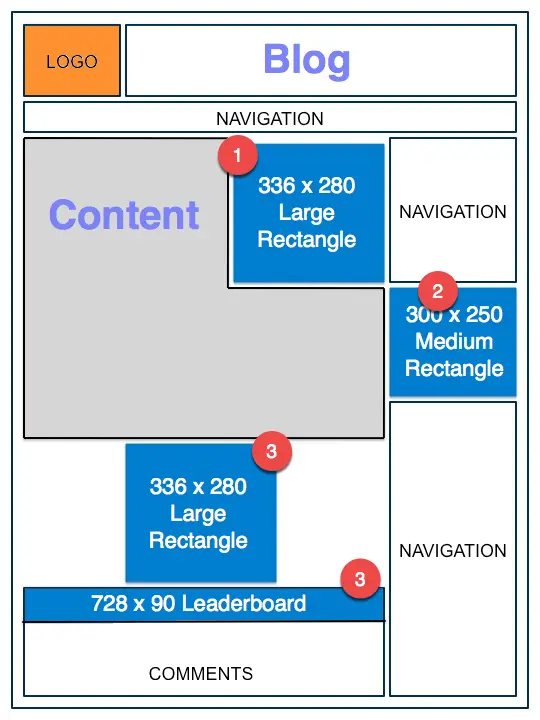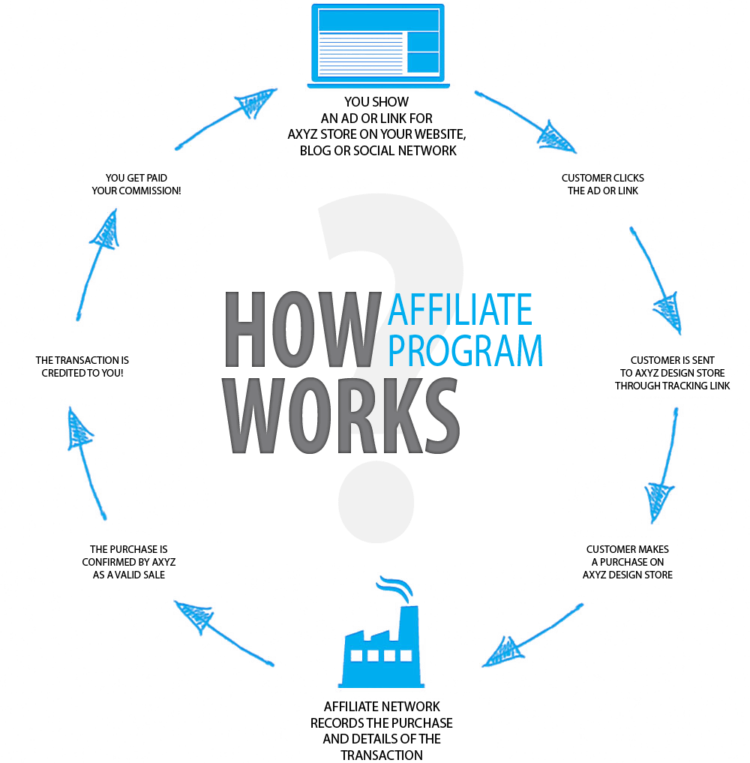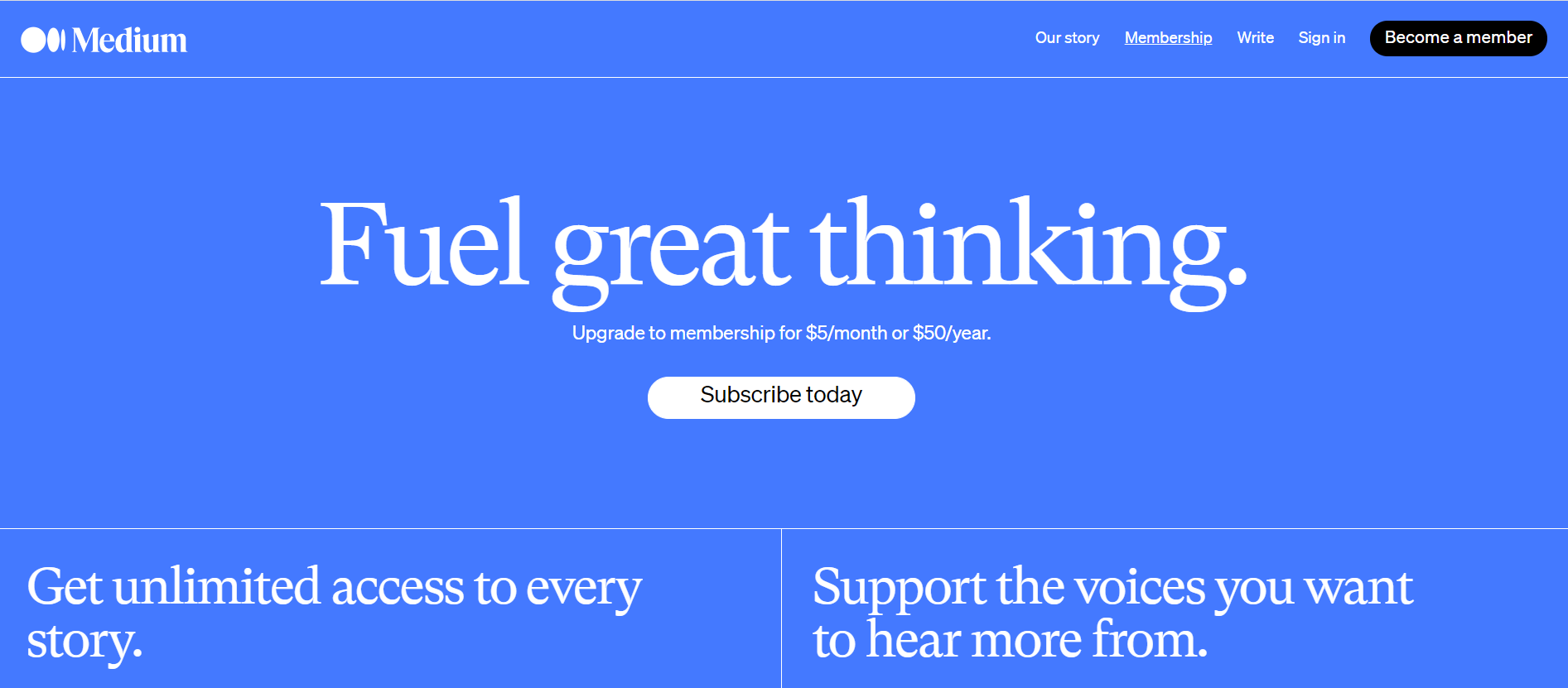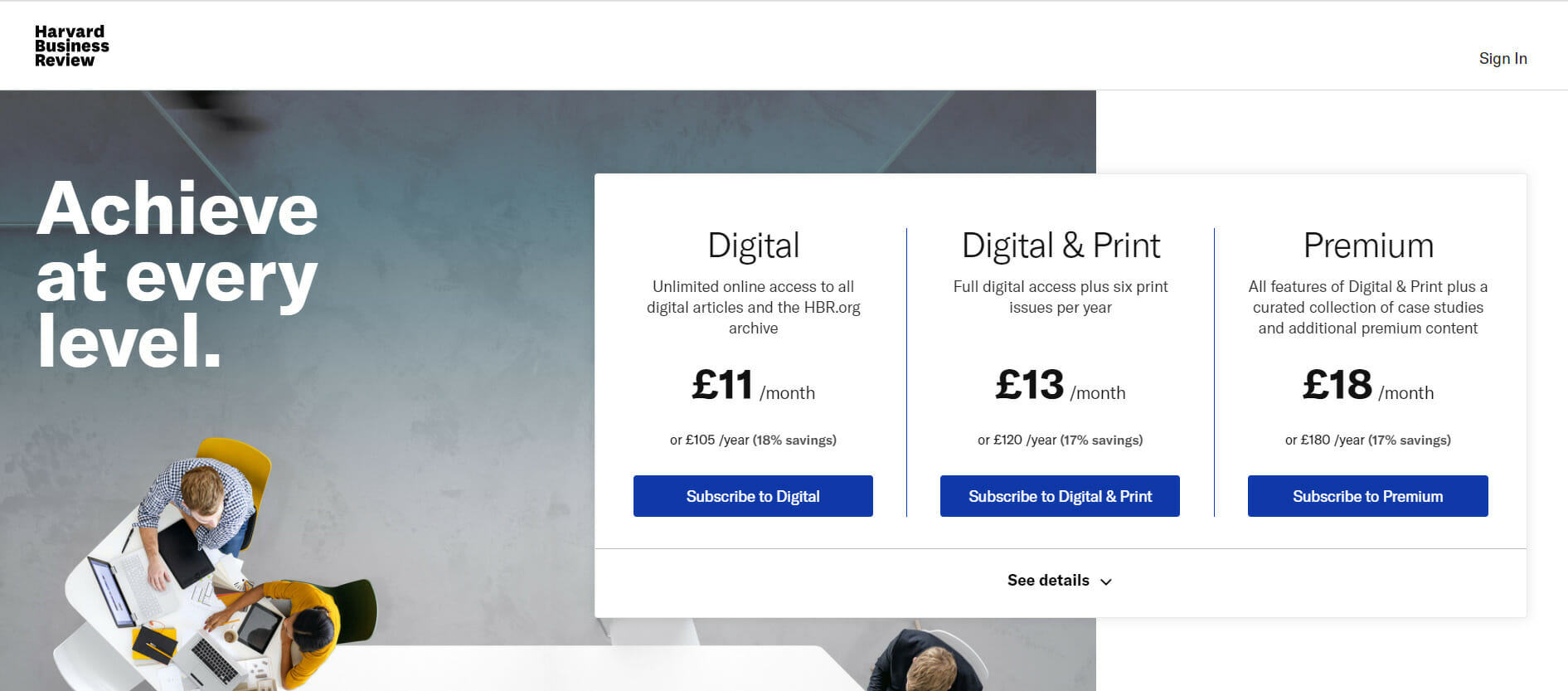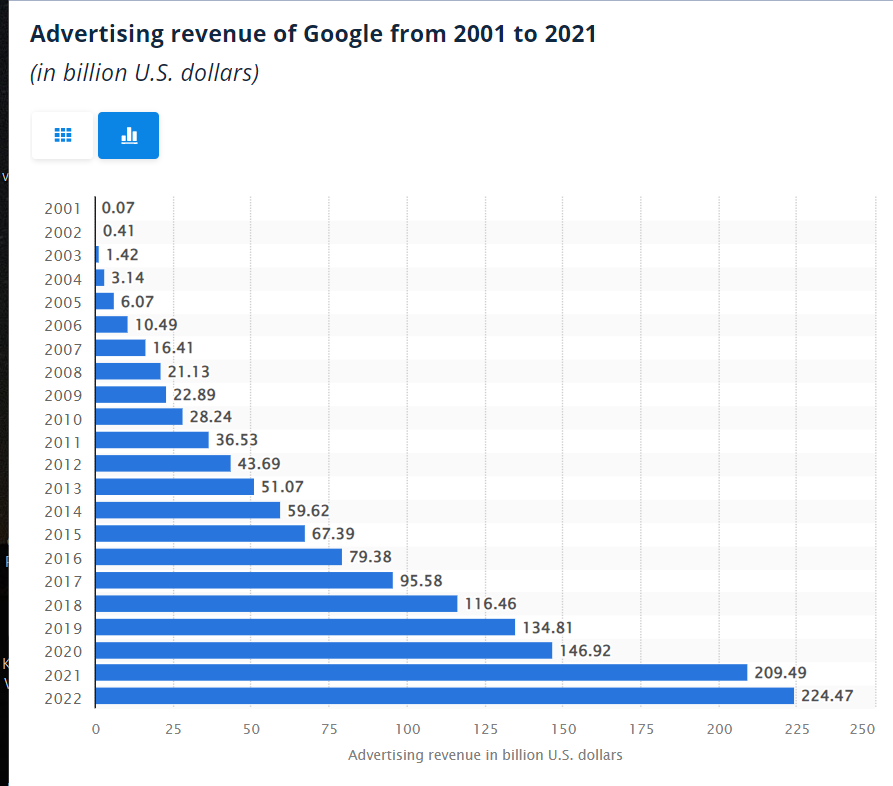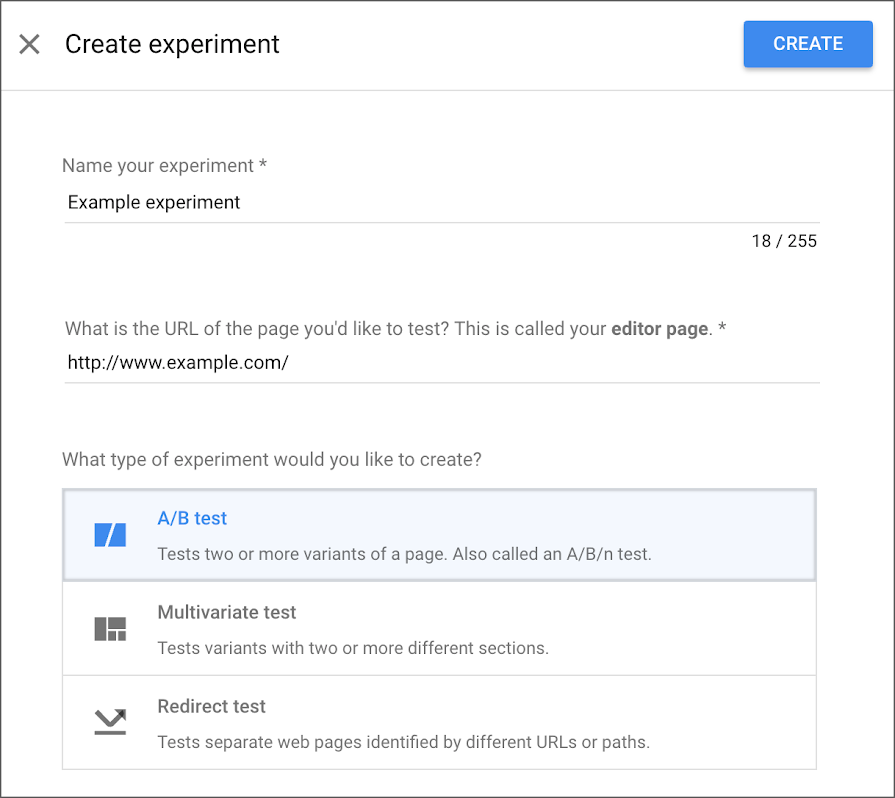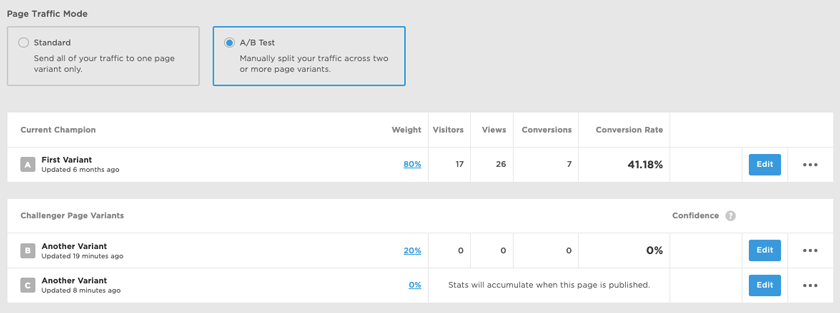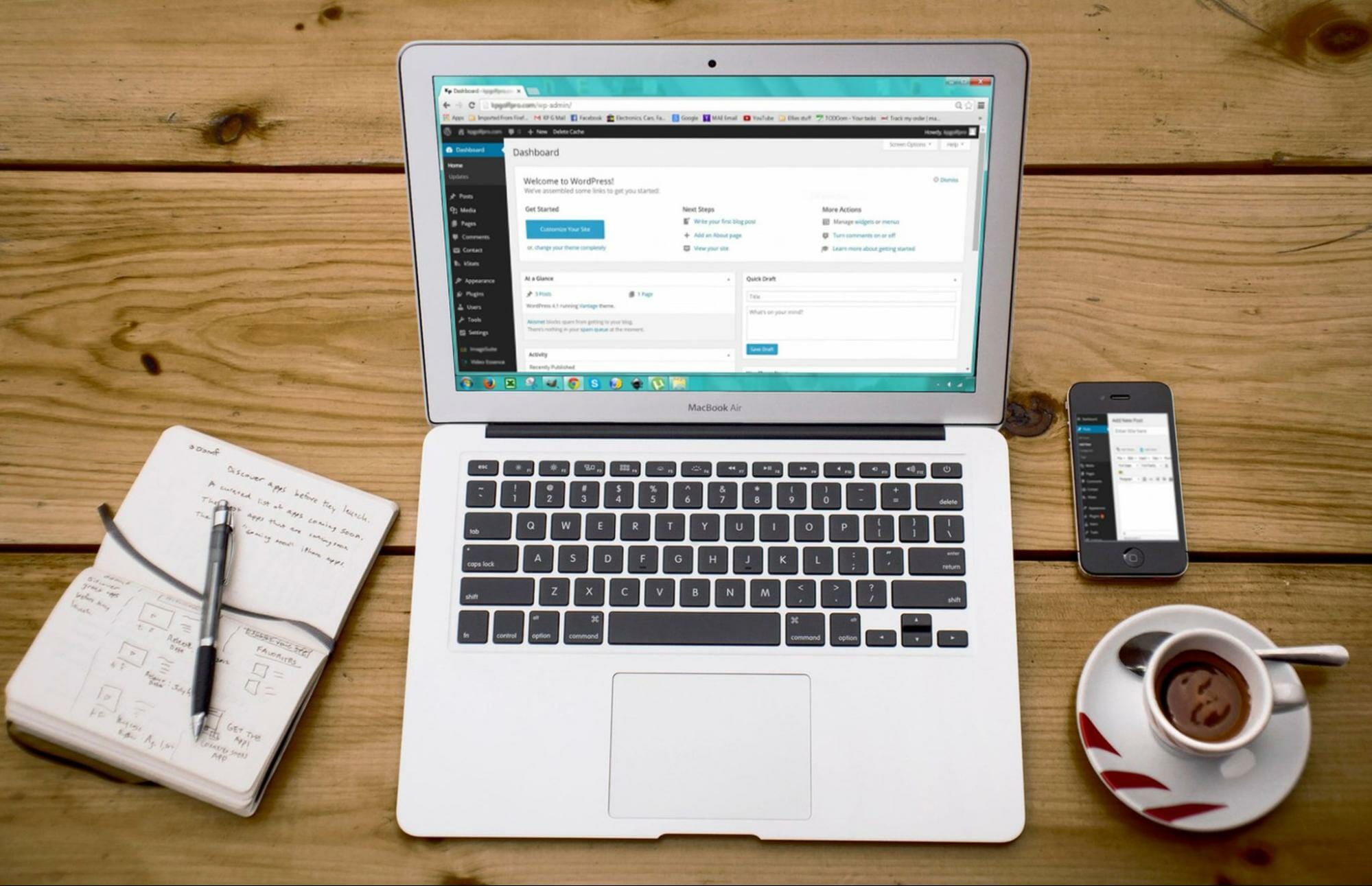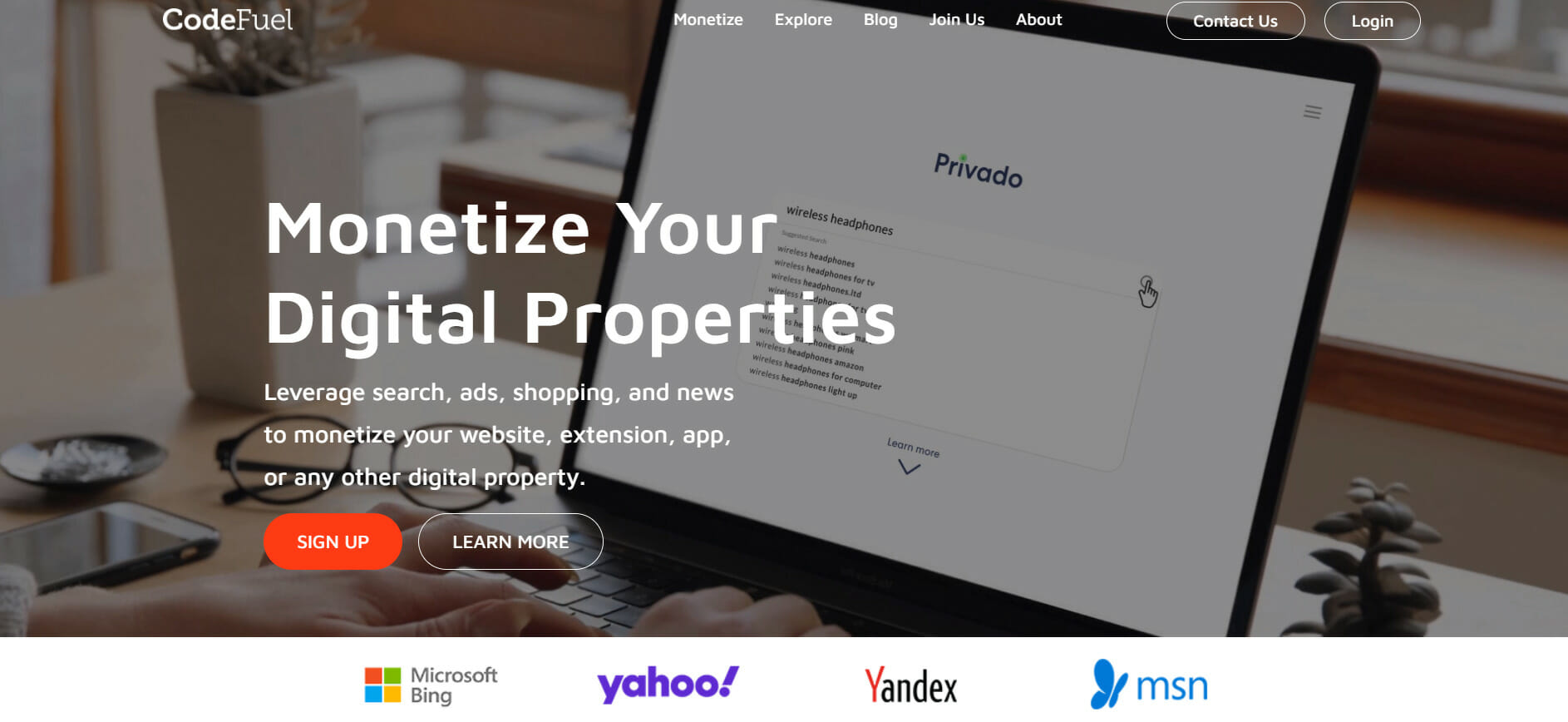Can you actually make a living from your new website? Yes, but you need to know how to do it right. Website monetization requires a lot of work and the right tools. That’s why here at CodeFuel, we prepared this guide.
In this post
Why Should You Monetize Your Website?
The popularity of successful bloggers and content creators may seem that making money on the Internet is simple. Most people think all it takes is to build a website or blog, choose how to monetize it, and sit to reap the earnings.
In reality, more than half of bloggers make less than $5000 a year. And most bloggers quit even before the year. Why?
It is easy to create a website or blog; What is hard is keeping it consistently valuable so you can make money from it.
To make money from your website, first, build your audience.
Attract them with great quality content that answers their queries. Remember to be consistent when publishing your content and integrate a social media strategy. If you do this month after month., there is a great chance you will succeed.
Blogging can be a lucrative business, with some bloggers earning six figures a month. Other sites use a combination of strategies from paid advertising, e-commerce sales, and sponsored deals.
Sure, those websites and bloggers spent years building their audiences, authority, and traffic. Some websites and bloggers fail to make money because the site is not going to make money by itself.
It requires creating content, optimizing for SEO, growing your social media base, and engaging your audience. Once you have all this in place, then the money may start coming.
Best Strategies to Monetize a Website in 2021 – 2023
This section is not a get-rich-quick guide, but following some of these monetization strategies can help you achieve a nice ROI.
Related content: Monetization Guide for Beginners in 2021
1. Pay-per-Click Advertising on Google
In this model, you sign up with a monetization platform or ad network. The network displays your website. You get paid a small fee every time a visitor clicks on the ad.
An example of a monetization platform is CodeFuel, which serves relevant ads based on user intent. The advantage of a monetization platform is that it can work with other ad networks and further extend monetization options.
In this model, the ad network or monetization platform is a middleman, bridging advertisers and publishers. They take out the hassle of finding advertisers to present ads on your site. But not only that. Working with CodeFuel – you enjoy smart optimization so your pages perform even better. Curious to find out more? Contact the CodeFuel monetization experts today.
2. Selling ad space
The marketing concept of selling ad space on a website refers to the practice of publishers generating income by offering advertising slots on their web pages to interested buyers. Publishers can directly start to sell ad space to brands or use ad networks. To take part in this form of website advertising, publishers need their own ad server to deliver completed as creatives to their website, or they can use the ad network delivering server.
Monetizing your ad space is one of the easiest and most popular ways of monetization. If you want to sell ad space, your layout must be kept in mind, so you don’t clutter the space with ads. Too many ads can push visitor’s back instead of attracting them to your site.
You should keep in mind the layout and placement of your ads because a cluttered site may put off visitors that may feel too salesly. Keep your website interesting by mixing different ad space. Also, different placements have different rates, so you can charge a higher rate for a larger ad space, such as a leaderboard, than for a small square on the side.
Selling ad space on a website focuses on the needs of businesses, defines their goods and services, and targets anyone who can buy them, ultimately improving advertisers’ sales and increasing the website’s revenue.
Learn more about how to choose the right ad placements with our guide.
3. Add an Affiliate link: Use Affiliate marketing
Affiliate marketing is a type of online advertising that involves a company paying compensation to third-party publishers or affiliates to promote their products or services to their audience. In this form of marketing, affiliates earn a commission for each successful sale or lead generated through their unique affiliate links.
This form of marketing is helpful for affiliate partners and companies. It helps affiliate partners to generate income without having to invest in creating products or services, while businesses can reach a broader audience without having to spend a significant amount on advertising. Affiliate marketing is easy to set up and requires only a website to promote products or services to the audience.
To succeed in affiliate marketing, one needs to choose relevant products to promote, find the right platforms to promote the products and follow ethical practices.
How does this work with a website?
When you sign up with an affiliate network, you get affiliate links to the advertiser’s site. For instance, if your website is about books, you earn a commission every time a customer buys a book by using your affiliate link.
Affiliate marketing sometimes gets a bad reputation. You must comply with disclosure regulations to succeed with affiliate marketing without risking your good name. Here are some recommendations for affiliate partners and websites:
- Be transparent: disclose any affiliate link or referral relationships you have.
- Target to your audience needs: only recommend products that give value to your audience.
- Don’t be too promotional: over-promoting annoys your visitors. And never promote a product that you didn’t check or know.
Where can you put the affiliate links?
The links are most effective when they are part of valuable content. Some examples of content you may produce include:
- Product reviews
- Product comparisons
- Tutorials
Steps to create an affiliate marketing strategy
- Do your research: Try to find products or services that would solve a pain point for your audience and would complement your niche brand.
- Join an affiliate program: There are numerous affiliate programs. Some pay you per lead made, while others pay you per sale. Learn how to choose the right affiliate network for you. Some examples of affiliate programs are ClickBank, Commission Junction, and ClickBank.
- Update your content: the content should be relevant and high quality to encourage your viewer to click on the affiliate link. Good content doesn’t limit to blogs. You can also write reviews, how-to articles, resource pages, and landing pages.
- Remember to refresh your links: Affiliate links expire after a few days, so set reminders to refresh them.
- Keep your eyes open for offers: Sometimes, affiliate networks and companies will have special offers to earn extra money.
4. Sell a product or merchandise on an e-commerce store
You may already have a physical product to sell. If not, creating and selling a digital product can be a great monetization strategy. A digital product is something that falls under the approach of “create once, distribute forever”, which enables you to generate income without having to create products all the time.
You create the product and promote it to your audience. Some examples of digital content you may sell:
- E-guides, e-books, and audiobooks: if you are an expert on a subject, put your expertise to use in a book and sell it. You don’t need to send them to print and distribute your ebooks in digital form. You can also offer printing on-demand or turn your e-guide into an audiobook. Audiobooks offer users the convenience of following a book from anywhere, in the car, on the bus, or while working out. That’s why they are very popular.
- Build an app or extension: an application can extend the reach of your website. For instance, adding a workout tracking app can increase your earnings if you run a fitness website.
- Sell merch: popular bloggers and content creators also make money by selling merchandise. While you can see this more with YouTubers, bloggers and niche websites also sell merch, adding an extra income stream.
5. Start a Paid Membership website
Setting up a paid membership sittes can bring you a steady income. You can create a paid gated community where users can engage in forums, discussion boards, and workshops. If you are geared towards online learning, you can create a paid membership that gives access to varied educational material, like courses, webinars, and podcasts.
6. Build an email list
Email lists are essential for lead generation. But did you know that you can monetize access to your email list? If your newsletter gives value to your users, you charge users to access it. Examples of paid newsletters include The Economist and VeryGoodCopy. You can charge directly or use Patreon to set a sponsorship model.
7. Generate ‘Leads’ for Other Companies
If you promote other businesses’ products on your website, you can use that to generate leads for them. Through content pieces like product reviews or comparison articles, you can direct interested users to a business landing page with a form. There they can opt-in to the business offers. Lead generation services can add revenue to a website. Keep in mind that running a website specializing in product reviews and comparisons can work better.
8. Accept sponsored posts and publish product reviews
Publishers often think that adding sponsored content or sponsored posts can negatively impact their own brand. But in reality, sponsored content adds more value and options to your offer. When you give your users sponsored reviews on recommended products, you give them answers to their queries.
This strategy also helps you grow your site authority as you provide expert advice for a product or service. In addition, you can offer sponsorship opportunities for your live streams, which is one of the latest trends in content marketing.
Why publish sponsored posts and content? Why is it valuable to readers?
Sponsored content can be valuable for website owners looking to increase engagement and revenue as well as web traffic. By partnering with sponsors to create premium content that aligns with their brand, website owners can offer their target audience informative and engaging content they might not otherwise have access to.
Sponsored posts and content can help build trust and loyalty with dedicated readers while generating revenue for the website through sponsored content deals. Additionally, sponsored content can provide website owners with an opportunity to showcase their expertise and thought leadership in their industry, helping to establish them as a go-to resource for their audience
9. Put content behind a paywall.
You can create exclusive or specific content and charge for it. This allows you to give them premium content that they cannot get from other sites. This model is popular among research firms (Statista premium) and business publications like the Harvard Business Review.
10. Monetize your expertise
If you are an individual blogger and an expert in your industry, you can offer your services directly from your site: one-on-one consulting, speaking engagements, or any other service you may like. Your site can be your personal portfolio.
What services may you offer? This will depend on your expertise niche, but in reality, the sky is the limit.
Some examples may include
- Photographers
- Life coaches
- Writers – Copywriters
- Web developers
- Graphic Designers
- Personal trainers
- Fashion stylists
11. Ask for donations
The practice of asking your website visitors for donations to support your site has become more popular in the latest years. It may seem unusual, but when you think about it, it gives you a monetizing option without having to fill your site with ads.
Gamers, artists, video and comic creators are among the types that adopted this method successfully. Photographers on free stock sites would usually add a donation button. Other examples include non-profits and social campaign sites.
12. Launch a dropshipping store
If you want to enter the world of e-commerce online store(s) without hassling over inventory, shipping, and production, then dropshipping can be a solution for you.
When you set up a dropshipping store, your supplier keeps the stock until you made a sale. The supplier also takes care of the packing (with your brand) and shipping to your clients.
That seems easy, and it can make you about $5000 a month, but you need to put in an effort. A successful dropshipping online store involves finding reliable suppliers, setting up an attractive e-commerce store, giving good customer service, and promoting the business.
13. Launch and offer online courses & memberships
Online courses are a very popular way to turn your expertise into money online. You create the online course once, and then you can earn a recurring income every time a user signs up for the course. During the pandemic, e-learning became almost essential, and with the market expected to reach $325 billion by 2025, it is a very lucrative opportunity.
You can launch a certification program for sites that are suitable for e-learning. You must be an established authority in your niche for this strategy to work. Your brand should be recognized with a solid customer or fan base.
By launching a certification program, website owners can give users actionable knowledge they can relate to your brand. If you already offer e-courses, you can offer an advanced training program. This method will also strengthen your brand and your authority in your industry.
An example of such monetization strategy is Copyhacker’s Copy School. While you can do many of their courses for free, they have a specific certification program for conversion copywriters.
Offer Subscription-based membership
Besides offering paid courses, you can also add a premium membership tier, subscription-based. Premium users can unlock new or exclusive content, reference materials, or specific tutorials that are not available to regular users. For example, while HubSpot courses are free, the company offers Bootcamps for users of their solution.
14. Flip and Sell Websites
Website developers can make a good income by investing in websites that are monetizing but require a boost. Then improving them by growing the traffic, raising their value, and selling them. That is called website flipping.
To be successful, you need to select the right website according to the potential of selling it. E-commerce, financial, and drop shipping sites usually get the highest price, according to Empire
Flippers. You should check metrics such as traffic, SEO, conversion rates, audience, and monthly revenue.
If you are good at building websites, you can opt for building and selling ready-made websites. Of course, this is not that easy. You need to find a suitable niche, promote it, grow it to make it attractive, monetize the website, and put it for sale. Hopefully, you’ll find an interested buyer.
15. Start using Google Adsense.
Google AdSense is Google’s offering for an ad network that enables publishers to monetize their websites with ads. Google AdSense is a great opportunity for site owners that want to monetize with ads because of its massive reach. In 2022, Google’s ad revenue reached 224.47 billion US dollars, mostly from search advertising.
Source: Statista
This solution works programmatically, which means an automatic bidding system selects the best ads for the website. Google uses different types of targeting to select the ads for your site.
Learn more about monetizing with AdSense with our How to Make Money with Google AdSense guide.
How Many Views Do You Need to Monetize Your Website?
For your website monetization efforts to be effective, you need a large number of views, starting from 10,000 organic views a month, especially if you are monetizing through an ad network.
Ad networks like Google Adsense pay, on average $5 per 1000 views. Therefore, if you want to make a full-time income (around $5000/month), you should increase your views to 1,000,000.
But don’t get discouraged because if you have a niche website, there are strategies that can make it work with a smaller audience. Small site owners can work with niche ad networks, for example.
These sites use varied strategies for monetization. If you want to monetize with ads, look at the following sections, where we’ll explain more in detail.
What Type of Ads Should I Use to Monetize My Website?
There are many types of ads for monetizing your website. If you wonder how to choose the right type of ad for your website, continue reading. Here are the most popular types of adverts, you’ll surely find a type that is right for your website.
- Banner Ads: These are the most popular form of advertising and monetizes the site by inserting an ad into the webpage. However popular, banner ads are not the most effective conversion-wise. Monetizing with banners requires that your website be attractive for advertisers, with a large base of organic traffic.
- Video ads: Video can be more effective than static ads. It engages the user easily and, in general, may convert better. Adding video ads can be a good source of revenue if you do it smartly. Avoid interrupting the user experience or start playing automatically as the user enters the page. You can set it up to play when the user reaches related content.
- Interstitial Ads: These types of ads cover the interface of the host app or site. Since they are interactive, they are designed to appear between the content without disrupting the user experience. Their higher impression rates usually result in higher click-through rates.
- Native Ads: these are ads that blend with the content, resulting in a higher visual engagement than other types of ads. Since they complement the content, enhance the user experience.
Optimize Your Website’s Ad Experience
Giving your users a great ad experience will make them more likely to click on the ads. Here are some ways you can make your users’ ad experience more enjoyable:
- Optimize for mobile
Your website visitors will come to your website through different devices, therefore you want them to enjoy the ads from anywhere.
Ensure your users can see the ads properly also from mobile without the need for squinting or zooming.
- Optimize the layout
As we mentioned above, a page that is cluttered with ads can actually annoy the user. Experiment with the placement and number of ads until you find a rate that brings the most impact without being too busy.
- Give users a unique ad experience.
Even when you cater to a specific audience, your users are all unique. Publishers should customize the ad experience according to different user categories to optimize results. You can do this by using monetization software that displays ads according to user intent.
The Best Tools for Testing Ads
You should test the ads to make sure you have the winning combination in your hands. Typically, publishers and advertisers will use A/B testing to choose the more effective ad version. You should check the usability, reach, and engagement of your ads.
If you are not an expert on ad testing, you can use tools that make your life easier. Here are some of the most popular:
Google Optimize – Free
This online split-testing tool from Google works as a plug-in for your website. You can test several versions of your as or conduct A/B testing. It is simple to set up and free. To use it, you open Google Optimize and connect your Google Analytics account. The caveat is that it is not automated so you have to do everything manually, taking time and effort.
Optimizely – Paid
If Google Optimize is not enough, Optimizely is a good paid option, which is also very popular. It is a low-cost option and easy to use. To use Optimizely, you add the code to your site and can start optimizing in a few minutes. This also works for other digital products like as.
Unbounce
This tool specializes in A/B testing. With Unbounce, you can compare multiple variants of the same ad by website visitors and conversion rates. You can try the multiple versions on an equal number of users or use the “smart traffic” feature, which lets you learn which pages work for different user categories. You can learn more about how to use this tool for A/B testing by consulting the documentation.
How to Balance UX and Monetization Effectively
If you choose to monetize with ads probably, you’ll think that more ads mean more revenue. In reality, using every available space in your webpage with ads can have exactly the opposite effect.
To have great revenue potential from ads, your visitors need to want to click on them. That means you need to ensure your users have a great experience.
Here are three keys you should keep in mind to balance user experience and ads:
1. You don’t need all the ads
Focus on the ones that actually drive engagement for your website. Choose the ads that will give more value to your specific audience. People tend to scan the page looking at what is relevant for them. That is why ads that are contextually relevant are more effective.
2. Yes, you can personalize the ads.
Your audience is made of different individuals, and everyone has a particular intent when visiting your website. How can you ensure your ad’s offering relates to each visitor? That’s where monetization platforms based on user intent come to help. CodeFuel, for instance, displays ads based on the user intent, therefore keeping the offer relevant to the visitor.
Can You Monetize a Free Website?
The short answer is yes; you just need to find the right monetization method. Most websites online offer their content for free. How can you make money online from your free website?
Let’s say you have a free WordPress website with a paid hosting and a custom domain name. In this case, you can monetize it by using some of the methods we mentioned above. Here are some monetization strategies for monetizing a free website:
- Affiliate marketing
- Display ads
- Newsletter to a product: where you promote to your email list outside of WordPress, for instance, through a Shopify store.
You can also apply sponsored posts, sponsored content to sell your own products. You can do almost everything as a paid website. Keep in mind that some advertising networks like AdSense don’t work with free websites.
FAQ About Website Monetization
How do you monetize a website without ads?
Website monetization is the process of generating income from a website. While ads are a common way to monetize a website, other methods can also be used. One way to monetize a website without ads is through affiliate marketing. This involves partnering with companies and promoting their products on your website, earning a commission for any resulting sales.
Another website monetization method without ads is selling your products or services, including physical goods or digital products like e-books or online courses. Both of these website monetization methods offer alternatives to relying on ad revenue.
Other methods of website monetization may include:
- Flipping websites
- Accepting donations
- Gating content
- Accepting donations
- Holding paid webinars, workshops, and e-courses.
How much does AdSense pay per 1000 views?
Google pays 68% of its AdSense revenue to the publisher. The commission you get will depend on the Cost per Click in your niche. These days the commission per click ranges between $0.20 and $15, depending on how profitable is the niche.
How to monetize a website?
Having a profitable website is the goal of every site owner. You can reach this goal by using some proven ways to monetize your website while using your site’s content. There are several ways to make money from your site. Here is a short list of the best ways to monetize a website include:
- Affiliate marketing
- Display ads
- Native ads
- Review products
- Sell digital products.
Optimize your monetization efforts and Optimize your website with CodeFuel
CodeFuel is a complete monetization platform that helps you generate revenue from your digital properties, such as your website, extension, or application.
You can monetize your website with ease by leveraging user intent to display text ads, shopping and news. Increase conversions and click-through rates by serving contextually relevant shopping ads on your search result pages or website. This ensures your ads are served to match high-intent visitors, encouraging purchasing decisions.
CodeFuel is a free monetization platform that smoothly integrates into your existing solutions, offers end-to-end account management and business intelligence reports to track your monetization progress.
Are you ready to monetize? Contact CodeFuel and start monetizing the smart way today.


